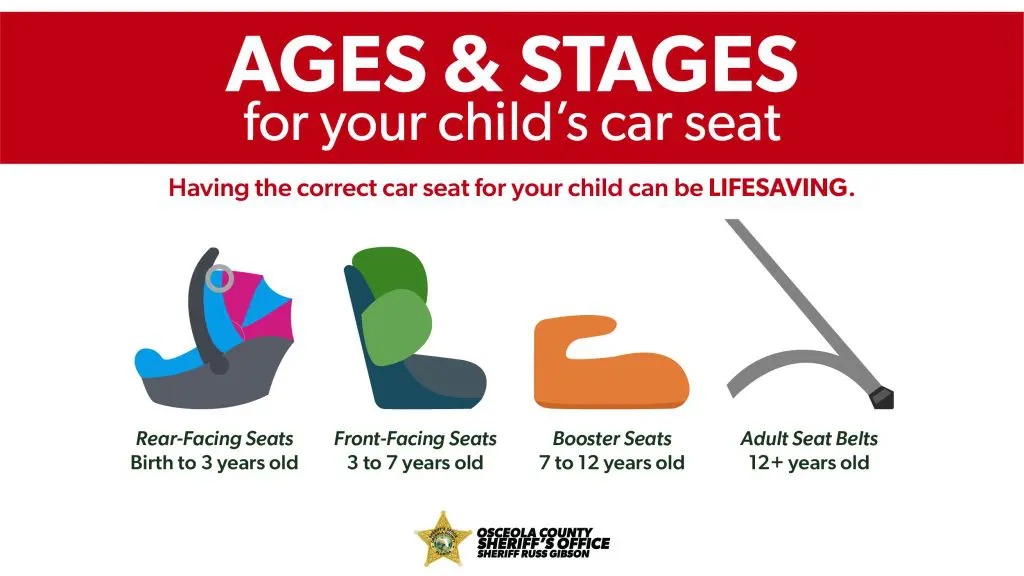There are 3 types of car seats: rear-facing seats, forward-facing seats, and booster seats. Each seat can come in a variety of different options including convertible car seats in which the seat can evolve from one type to another. In other words, a rear-facing can become a forward-facing, then it can become a booster seat.
Choosing a car seat can be confusing and many parents debate whether you are supposed to go by age, height, or weight when it comes to what type of car seat to use. Here is what the National Highway Traffic Safety Administration (NHTSA) recommends:
Rear-facing seats
Rear-facing is the safest seat for your child. It has a harness and during a crash, it cradles and moves with the child to prevent neck or spine injuries. In Florida, the law is that you have to keep children rear-facing until they are 1 year old, but you should keep your child rear-facing as long as possible. Once your child grows out of the seat’s weight or height limit, you may transition him or her to a forward-facing seat. This can happen anytime from the age of 1-3 years of age, however, it is recommended to keep your child rear-facing until at least 2 years old.
Forward Facing Seats
Forward-facing seats still have a harness and restrict forward moving in the event of a crash. NHTSA recommends a child stay in a forward-facing seat until he or she reaches the weight limit of the forward-facing seat. This usually happens between the ages of 4 and 7. Then the child can transition to the booster seat.
Booster Seat
A booster seat positions the seat belt so that it is properly situated over the top of a child’s strongest body parts. The seat belt should be safe across the shoulder and chest of the child as well as the lap belt section on the thighs. Children should stay in a booster seat until they reach the height or weight limit on the seat and can sit properly with his or her back flat on the seat behind them and feet flat on the floor. This usually occurs between the ages of 8 and 12.
Seat-Free
A child can go without a seat and just use a seat belt once they grow out of the weight limit for the booster seat. This usually happens around 12 years old. However, just because they no longer need a car seat does not mean they can ride freely in the front seat. Because of potential harm from airbags and the likelihood of crashing head-on being more probably, the safest place for anyone under 13 years of age is still the back seat. Though your body is still growing at the suggested age of 13, your bones and muscles are much stronger than those of an infant, toddler, or pre-teen. You’re usually more aware of your body and able to withstand more energy from a car accident than younger children.
If you have any questions or would like more information please visit the NHTSA website or call us at 407-348-2222.

